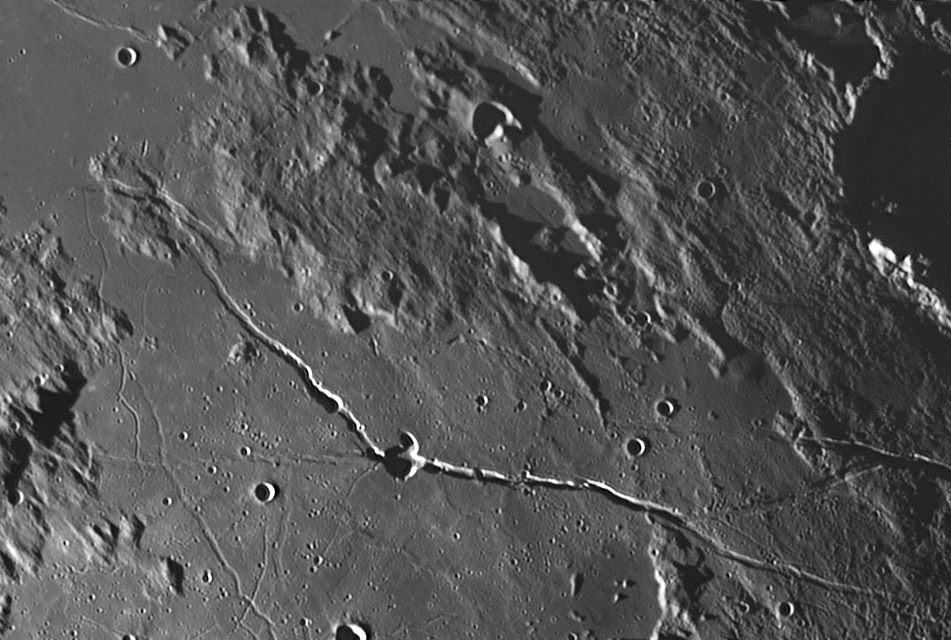Difference between revisions of "November 8, 2010"
| Line 3: | Line 3: | ||
<!-- ws:start:WikiTextHeadingRule:1:<h1> --> | <!-- ws:start:WikiTextHeadingRule:1:<h1> --> | ||
<!-- ws:start:WikiTextLocalImageRule:16:<img src="/file/view/LPOD-Nov8-10.jpg/177304865/LPOD-Nov8-10.jpg" alt="" title="" /> -->[[File:LPOD-Nov8-10.jpg|LPOD-Nov8-10.jpg]]<!-- ws:end:WikiTextLocalImageRule:16 --><br /> | <!-- ws:start:WikiTextLocalImageRule:16:<img src="/file/view/LPOD-Nov8-10.jpg/177304865/LPOD-Nov8-10.jpg" alt="" title="" /> -->[[File:LPOD-Nov8-10.jpg|LPOD-Nov8-10.jpg]]<!-- ws:end:WikiTextLocalImageRule:16 --><br /> | ||
| − | <em>image by [mailto:christian.viladrich@neuf.fr | + | <em>image by [mailto:christian.viladrich@neuf.fr Christian Viladrich]</em><br /> |
<br /> | <br /> | ||
| − | The area of Hyginus is full of rilles, including some very faint ones in Christian's image that are infrequently seen. The most prominent hard to see rilles are the straight ones that cross the center of the elongated crater chain - Imbrium secondaries - at top center. More thin rilles extend from Triesnecker to the upper left where they are covered by the younger lavas of Mare Vaporum. Another narrow rille cuts Imbrium ejecta masses about perpendicular to the left end of the Hyginus Rilles, and on the opposite side of the image an additional rille roughly parallels the east end of the Hyginus Rille where it merges with the Ariadaeus Rille. Finally, this fine image nicely captures the pitted dome in a small patch of young maria near right center - and do you see another likely dome near top center? Most of these features have been imaged [http://www.lpod.org/archive/archive/2004/02/LPOD-2004-02-25.htm | + | The area of Hyginus is full of rilles, including some very faint ones in Christian's image that are infrequently seen. The most prominent hard to see rilles are the straight ones that cross the center of the elongated crater chain - Imbrium secondaries - at top center. More thin rilles extend from Triesnecker to the upper left where they are covered by the younger lavas of Mare Vaporum. Another narrow rille cuts Imbrium ejecta masses about perpendicular to the left end of the Hyginus Rilles, and on the opposite side of the image an additional rille roughly parallels the east end of the Hyginus Rille where it merges with the Ariadaeus Rille. Finally, this fine image nicely captures the pitted dome in a small patch of young maria near right center - and do you see another likely dome near top center? Most of these features have been imaged [http://www.lpod.org/archive/archive/2004/02/LPOD-2004-02-25.htm before] (with a much larger telescope) but I still like seeing them again with this dramatic lighting.<br /> |
<br /> | <br /> | ||
| − | <em>[mailto:tychocrater@yahoo.com | + | <em>[mailto:tychocrater@yahoo.com Chuck Wood]</em><br /> |
<br /> | <br /> | ||
<strong>Technical Details</strong><br /> | <strong>Technical Details</strong><br /> | ||
| Line 14: | Line 14: | ||
<strong>Related Links</strong><br /> | <strong>Related Links</strong><br /> | ||
Rükl plate [http://the-moon.wikispaces.com/R%C3%BCkl+34 34]<br /> | Rükl plate [http://the-moon.wikispaces.com/R%C3%BCkl+34 34]<br /> | ||
| − | Christian's lunar [http://astrosurf.com/viladrich/astro/moon/closeup/closeup.html | + | Christian's lunar [http://astrosurf.com/viladrich/astro/moon/closeup/closeup.html website]<br /> |
<br /> | <br /> | ||
<hr /> | <hr /> | ||
| − | <div>You can support LPOD when you buy any book from Amazon thru [http://www.lpod.org/?page_id=591 | + | <div>You can support LPOD when you buy any book from Amazon thru [http://www.lpod.org/?page_id=591 LPOD!]<br /> |
</div> | </div> | ||
---- | ---- | ||
===COMMENTS?=== | ===COMMENTS?=== | ||
| − | + | Register, and click on the <b>Discussion</b> tab at the top of the page. | |
Revision as of 17:27, 11 January 2015
Why So Many Rilles?

image by Christian Viladrich
The area of Hyginus is full of rilles, including some very faint ones in Christian's image that are infrequently seen. The most prominent hard to see rilles are the straight ones that cross the center of the elongated crater chain - Imbrium secondaries - at top center. More thin rilles extend from Triesnecker to the upper left where they are covered by the younger lavas of Mare Vaporum. Another narrow rille cuts Imbrium ejecta masses about perpendicular to the left end of the Hyginus Rilles, and on the opposite side of the image an additional rille roughly parallels the east end of the Hyginus Rille where it merges with the Ariadaeus Rille. Finally, this fine image nicely captures the pitted dome in a small patch of young maria near right center - and do you see another likely dome near top center? Most of these features have been imaged before (with a much larger telescope) but I still like seeing them again with this dramatic lighting.
Chuck Wood
Technical Details
29 October 2010, 4h35mnUT. Grand Colombier Celestron 14 at F/19.3 (Takahashi ext X1.5 ED) + Skynyx 2.1M video camera + Astronomik red filter.
Related Links
Rükl plate 34
Christian's lunar website
COMMENTS?
Register, and click on the Discussion tab at the top of the page.



